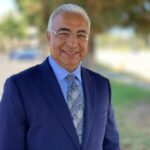Updated 9/1/2022 with legislation status.
With more than 800 members, the California Rheumatology Alliance (CRA) is one of the largest and most active state rheumatology organizations. The CRA comprises rheumatologists and rheumatology professionals from community practices and medical centers throughout California.
“Our membership encompasses all health professionals within the field of rheumatology—physicians, nurses, nurse practitioners (NPs), physician assistants (PAs), fellows currently enrolled in a California-based rheumatology training program, office managers, researchers and medical science liaisons,” says Shanna Castro, the CRA’s executive director.

Ms. Castro
After a two-year hiatus, the CRA held its first in-person conference since the start of the pandemic in May in San Francisco.
“Given the situation at the time of planning, we prioritized the health and safety of our faculty, attendees and exhibit partners and reduced the number of in-person attendees by 50% to ensure participants were able to reconnect with their colleagues while learning in a safer environment,” Ms. Castro says.
The CRA holds a practice manager track that runs concurrently with the annual meeting, says Ms. Castro. It provides an opportunity for practice managers, supervisors and billers to network with their peers and share ideas on how to efficiently and effectively oversee a rheumatology practice.
At this year’s conference, the CRA bestowed its Lifetime Achievement Award on Michael Stevens, MD, FACR, a rheumatologist at San Mateo Rheumatology. Dr. Stevens founded CRA in 2004 and served as president of the organization from 2004–10.
Overcoming Challenges
Like many states, California is experiencing a shortage of rheumatology professionals, says current CRA president Samy Metyas, MD, MSc, FACR, FACP, a rheumatologist at the Covina Arthritis Clinic.

Dr. Metyas
“We see most physicians and rheumatology staff, including NPs, PAs and others, going to work in big healthcare organizations and hospitals that can offer more money than private practices,” Dr. Metyas says. “Private rheumatology practices are shrinking because of a shortage of rheumatology fellowships and training.”
These shortages have also resulted in increased waiting times for patients to see a rheumatologist, he notes. “Community rheumatologists need additional help in seeing patients and running their practices efficiently.”
During the pandemic, telemedicine became a popular option among rheumatologists in California, Dr. Metyas says, but it’s not a replacement for traditional office visits.
“Rheumatology is based on clinical examination,” Dr. Metyas says. “While telemedicine helped us to continue seeing patients during the peak of the pandemic, these visits don’t replace clinical exams. In addition, some insurers aren’t reimbursing telemedicine visits at the same rate as in-person visits.”

